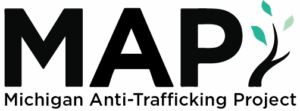What is your Slavery Footprint?
How many slaves work for you?
We know. This is a jarring question to be asked. And if you are like us, you answered with a big “N-O” (exclamation point).
And if you are also like us, then you would be wrong to answer with a no.
Unfortunately, most global supply chains today involve forced and/or child labor. There are approximately 22,000 men, women, and children who are being trafficked for labor in our world right now. (Global Estimates of Modern Slavery, ILO, Sept. 2022)
Coffee, sugar, palm oil, and chocolate are all foods that are at a high risk for having forced and/or child labor in their supply chain. A simple Google search will bring up many companies and the lawsuits against them.
The textile industry was brought to global attention with the Rana Plaza disaster in 2013, but still continues to be at high risk.
What about our cell phones, laptops, and electric cars? Most use cobalt. A large portion of cobalt production comes from artisanal and small-scale mining, where thousands of children work in hazardous conditions. Children work underground in tight quarters, carry heavy loads, and face serious injury risks from tunnel collapses and falling down mine shafts. View a PDF of the supply chain below.
Labor Trafficking Supply Chain
So, are you ready to take the survey to see how many slaves work for you?
We hope that taking this survey will help to open your eyes to how large this problem is, and also ways that you can be involved in helping to end labor trafficking in our supply chains.
We are the consumers! We create the demand, and if we demand transparency in supply chains, the companies will listen. We are seeing change, and we hope you can join in the movement to end labor trafficking!
If you would like more information regarding labor trafficking, you can reach out to us at: info@map-mi.org
